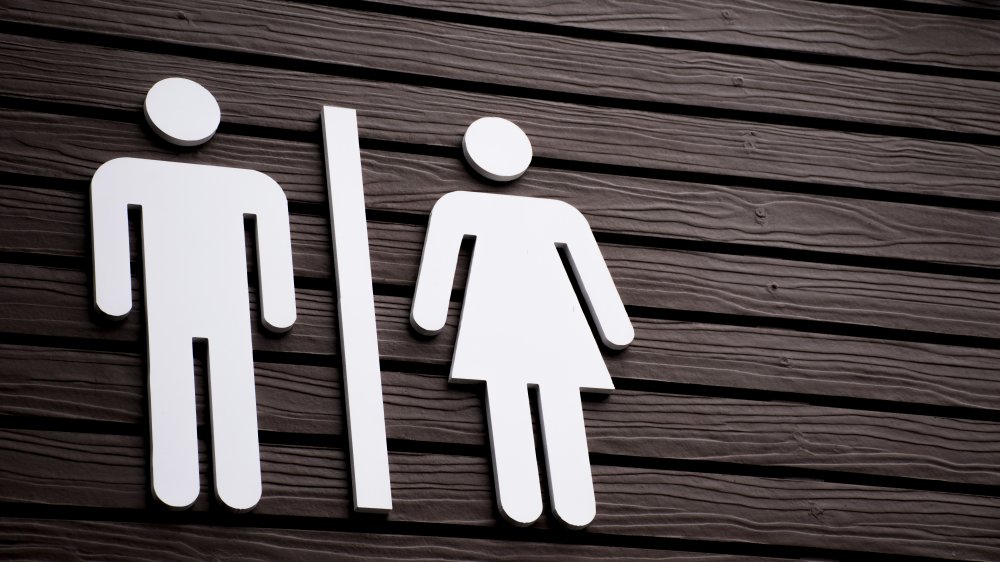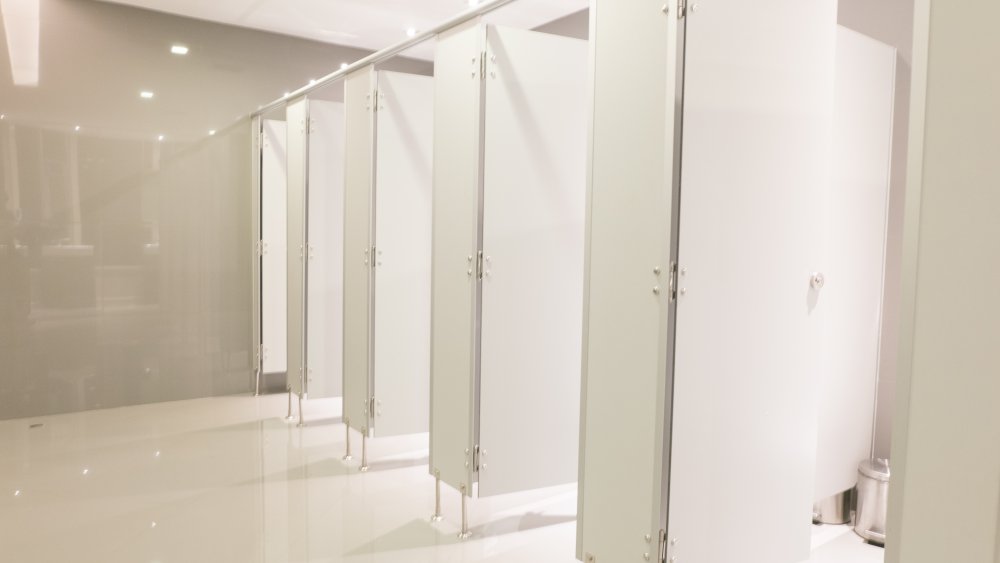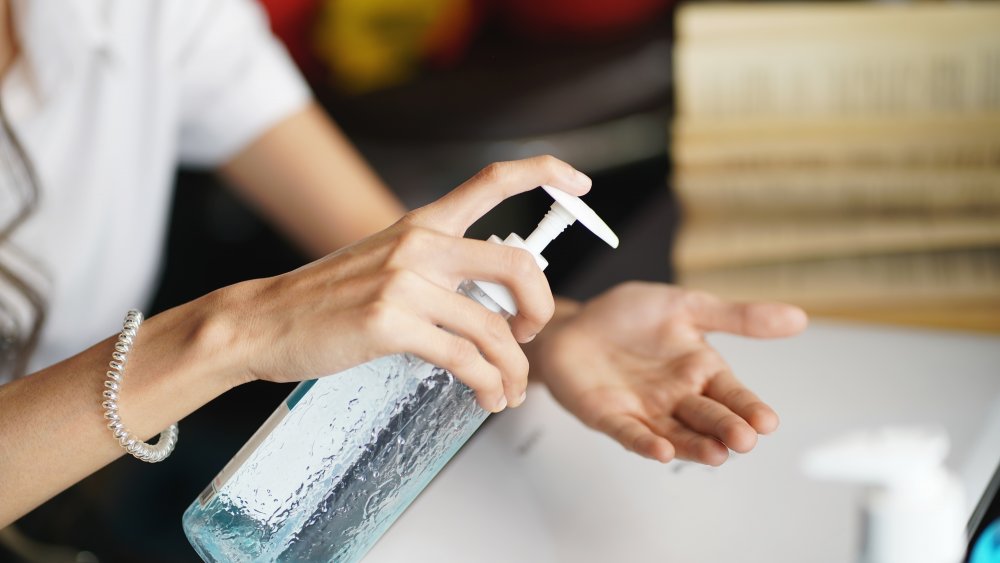How To Safely Use A Public Restroom During The Pandemic
When you gotta go, you gotta go. But what happens when you have to go, you're out in public, and you're trying to navigate the daunting new world where the rules are now being dictated by a highly infectious pandemic?
Microbiologists like Ali Nouri acknowledge that public bathrooms, as a whole, are a challenge, because they are filled with high-touch surfaces, from door knobs to countertops. They are small, making it virtually impossible to practice any form of social distancing. And then there's the fact that the toilets aren't exactly well-ventilated, which means there are plenty of opportunities for the airborne virus to hang around. "Bathrooms are enclosed spaces, and they don't have windows. So the virus, in an environment like that, is just going to linger," Nouri told CNN.
Beware of the toilet plumes in public restrooms
Scientists say they are particularly concerned about what happens when a potentially sick person uses the toilet and then flushes it. Even though the coronavirus infects through the upper respiratory tract (nose and mouth), it has also been known to attack the small intestines, and studies have found signs of COVID-19 in fecal matter (via Science Daily). So when you do your business and flush the toilet, researchers have found that the flush actually triggers a force that can push droplets and aerosol particles into the air — this is known as a toilet plume. What's more, a single flush can push between 40 to 60 percent of what should be staying inside the toilet into the air, so that it hangs around inside the stall long enough to affect the next occupant (via Health).
It's important to note: "There haven't been any reported cases of transmission of the coronavirus from toilet flushing," Amesh A. Adalja, an infectious disease expert at Johns Hopkins Center for Health Security, told Health. Still, you should think about waiting about 60 seconds to enter a toilet stall that someone has just vacated, particularly if the toilet seat is up (via The New York Times). Do your thing and drop the toilet lid before flushing as a courtesy to the next person using it. If the flush is automated, be sure to step back to avoid the spray.
Public restrooms pose no more of a threat than other indoor spaces
Todd Ellerin, instructor of medicine and director of infectious diseases at South Shore Hospital in Massachusetts, noted that a public toilet isn't any more dangerous than other indoor spaces (via Harvard Medical School). He also suggested that even if you enter a public bathroom without a mask (and you shouldn't), if you maintain a social distance of between six feet between you and the other persons inside, stay less than 15 minutes, and don't encounter any coughing and sneezing, any transmission risk is actually low.
In addition to wearing a mask and possibly glasses (or sunglasses) to protect your eyes, John Ross, who practices hospital medicine at Brigham and Women's Hospital in Boston, added that you should use your foot or hold a paper towel to do things like opening doors or turning on faucets. And once you're outside the restroom, spray your hands with sanitizer. It's also important to clean your glasses and cellphone when you're finished. "When it comes to the bathroom, follow the basic hygiene, get in and out, and you're probably in a low-risk group," Dr. Ellerin remarked.


